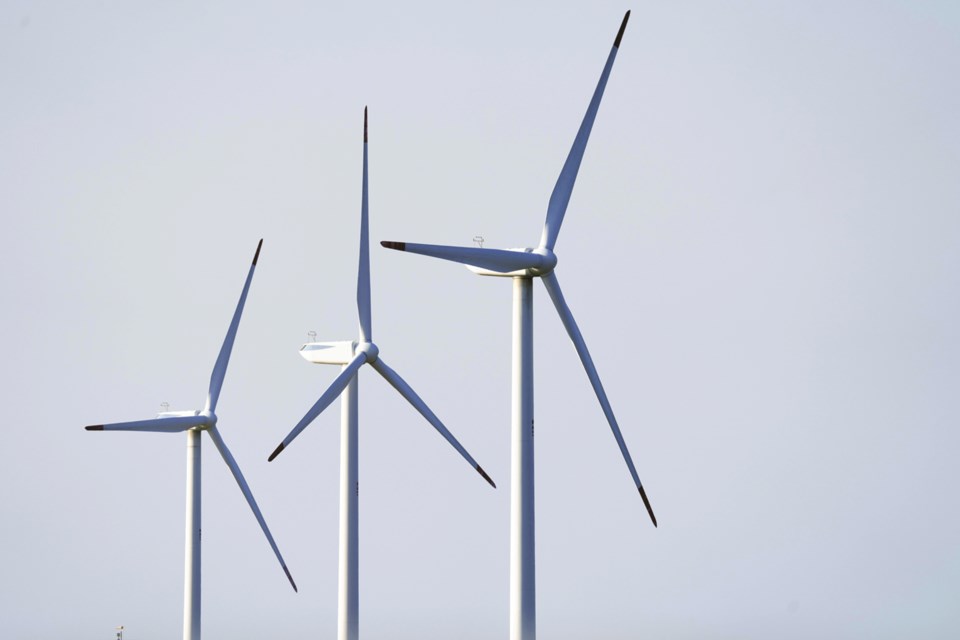LAKELAND – The six-month moratorium on the approval of new renewable electricity generation projects greater than one megawatt was lifted by the Government of Alberta on March 1.
The pause was put in place to allow the Alberta Utilities Commission (AUC) to complete an inquiry about the development of electricity generation in the province, at the direction of the Alberta government.
According to an August 2023 AUC announcement, the inquiry was intended to support the “economic, orderly and efficient development of electricity generation in Alberta.”
The renewables inquiry report was provided to the Government of Alberta on Jan. 31.
On February 28, Premier Danielle Smith, along with Affordability and Utilities Minister Nathan Neudorf, announced the moratorium had been lifted and spoke about changes Albertans can expect to see take place.
Smith said Alberta is Canada’s leader in renewable energy, explaining around 92 per cent of renewables investment in the country was in Alberta, due to the province’s deregulated electricity market and competitive system.
“We want our province to remain the jurisdiction of choice for investors. But growing our renewable energy industry must happen in well-defined and responsible ways,” which she said was not previously happening.
“First, we need to ensure that we're not sacrificing our future agricultural yields, or tourism dollars, or breath-taking viewscapes to rush renewables developments through, and it will keep Albertans at the forefront of our policy,” said Smith.
According to the Premier, there were 13 applications ready for review prior to the pause, and that number has increased to 26. She expects the trend will continue, reiterating, “We must be responsible when it comes to approving applications.”
Smith also acknowledged renewable energy is already included in the province’s energy production, “But the fact remains that they are intermittent and unreliable.”
With the new policies, Smith said the Alberta government will prioritize agricultural lands.
New policies
There are 13 new policies, which include prohibiting renewable generation developments on types of soils good for raising crops – called Class 1 and Class 2 land – unless developers can prove compatibility with agriculture.
For wind projects, there is now a buffer zone of 35 kilometers to safeguard viewscapes.
“Other proposed developments located within the buffer zones may be subject to a visual impact assessment before approval,” explained Smith.
Developers are also mandated to cover reclamation costs through bonds or security, which would either be provided directly to the province or landowners. “It is critical that we do not repeat errors of the past and that we have reclamation rules and costs accounted for at the beginning of any development.”
Smith said municipalities will also be given a voice, “by automatically granting them the right to participate in AUC hearings and allowing them to review rules related to municipal submission requirements, while clarifying consultation requirements.”
Minister Neudorf clarified the new policies will not apply to already-existing projects. “If there are policies or extreme circumstances that are raised, we may look at that,” he told a member of the media.
Wind Concerns
Wind Concerns is a movement composed of Elk Point area residents who are against the “imposition” of industrial wind turbines, according to the group’s website.
Mark Mallet, who was designated as a spokesperson for the group for several municipal delegations with the County of St. Paul and the Town of Elk Point, is the editor-in-chief of the Wind Concerns website.
“It's a huge step forward for our province to recognize the destruction that industrial wind factories have been having on our landscape, on our communities, and on the environment,” said Mallet.
Speaking shortly after the provincial announcement, Mallet said the 35-kilometre buffer zone is necessary to protect the beauty of the province, which contributes to the tourism industry but also helps protect the health of residents.
And while Mallet believes the 35-kilometre buffer zone is a step in the right direction, he said it will not protect migratory birds or insects, which he believes is a topic the province needs to study.
He also wonders which “pristine viewscapes,” quoting Smith, are going to be protected. “From what we can see, provincial parks are protected and if that’s the case, [should] the wind project slated for the Elk Point Area... be cancelled?”
Wind Concerns is against Elemental Energy’s proposed 75 MW Northern Valley Wind Project. Mallet says the proposed project site is located within 35 kilometres south of the North Saskatchewan River and Northern Valley.
According to the Elemental Energy website, the project would be located on “high wind landscape features south of Elk Point in close proximity to available interconnection capacity.”
Rural Municipalities of Alberta
The Rural Municipalities of Alberta (RMA) also voiced support for the new policies on Feb. 29.
The new approach to the focus of preservation of agricultural land is an important aspect, according to the RMA, as agriculture is crucial to the province’s economy – playing a major role in food security.
“Rural Alberta provides food security not only for the province, but for the nation. Ensuring that the growth of the renewable energy industry does not come at the cost of agricultural land is crucial to maintaining food production in future years and decades,” said Paul McLauchlin, president of the RMA.
Glen Ockerman, reeve for the County of St. Paul, echoed similar sentiments, noting many agricultural lands have been farmed on for generations, producing food for the province.
Ockerman said he is not fully against the development of renewable energy, “but they have to be done with some rules and regulations.”



